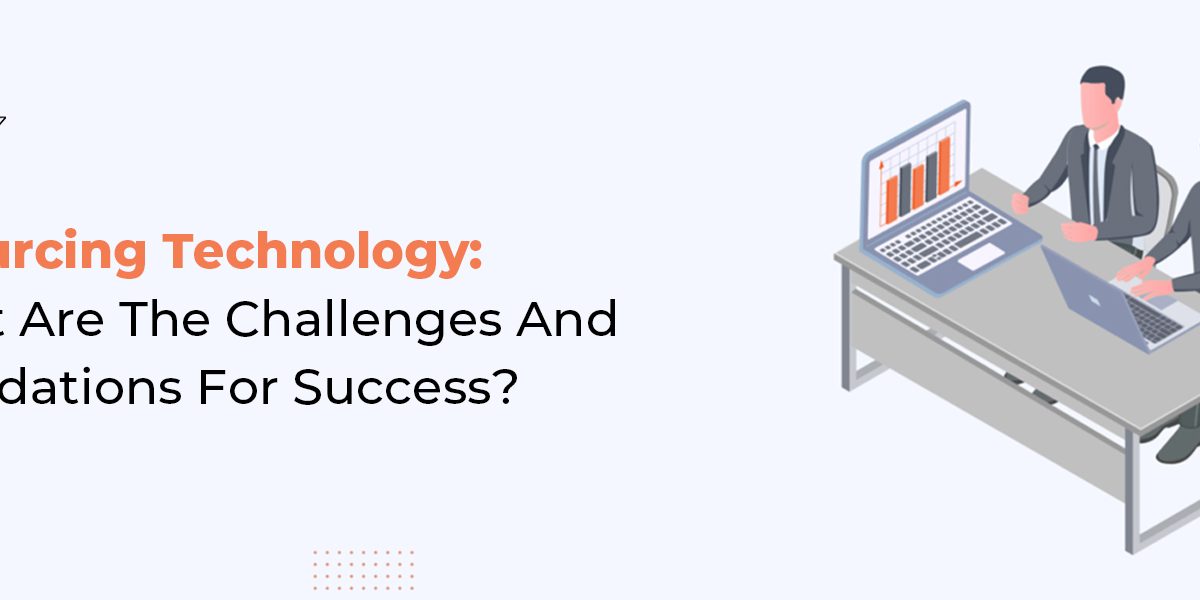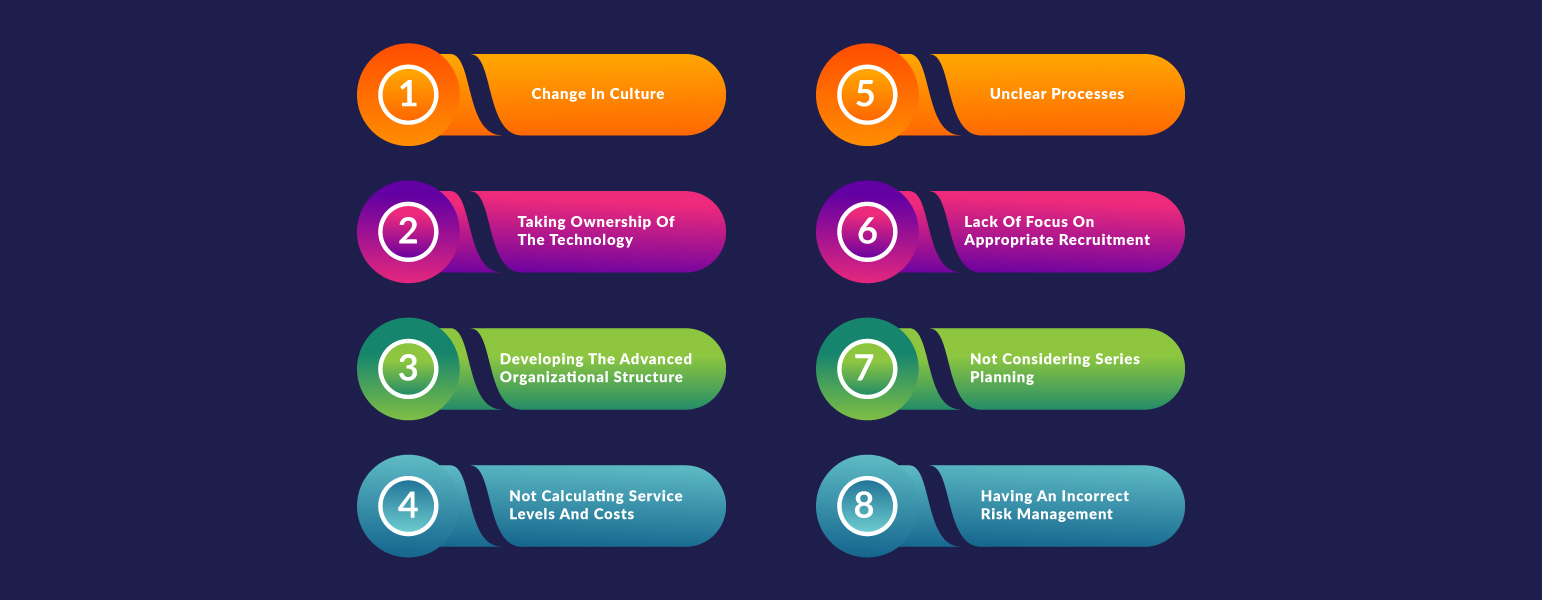
Insourcing is associated with the process of bringing specialized outsourced positions, departments and teams back in-house. There are various causes a company would source, just as there are several reasons organizations go for outsourcing. As per my personal experience, lack of performance from the managed service provider is one of the noticeable reasons which are invariably connected to the poorly negotiated contract by both sides.
There are different reasons to consider insourcing as an important service or function for your business that has been prioritized by an external third party third-party this blog, we would be discussing the challenges that appear when companies undertake the decisions to insure and what are the foundations to follow to ensure success.
What Do Companies Expect To Achieve From Insourcing Services?
The primary expectations which lead to sourcing, selecting to take back in-house processes, services, functions etc that external parties before undertook include lower costs, enhancing better control over services and so on. Find the list below of advantages of insourcing for companies:
- Establish competitive advantage, same companies that opt for outsourcing to provide their operational processes.
- Retain any intellectual property, for innovative amazing ideas created during the workers tenure.
- Maintaining a single culture can be beneficial, as a company’s culture can clash with that of its outsourced partners.
- Concentrate on their main values and provide services with the enhanced alignment to such values.
- Potentially decrease costs, if you are aware of what good looks like for the services you are considering to insure, then you can easily hire the correct people and potentially save lots of service costs.
- Promote innovation and more instantly, roll out iteration of ideas and pilots.
- Allowed to make more agile decisions, as the partner closest to the metaphorical coalface and however it is better to recognize the needs of the end-user.
- Take control and direction of the operational process in house to figure out how the services will be delivered, anything which needs to be relinquished to our partner. If you are outsourcing many customers may be better positioned to do it themselves.
Key Challenges Insourcing Services
Well, if there are some advantages of insourcing, so the challenges too. The transition may not always be seamless sailing. Here are some of the main issues that may appear:

1. Change In Culture
The problem of cultural change will mostly depend on how long your atmosphere was outsourced. Managed service providers delivery of service is explained by the contract they made with you. They will be amazingly thorough in differentiating between project work and
Business as usual supports (BAU). The exact reason is that BAU is what the annual contract fee comprises and project work seems to be cherry on the top.
In several cases MSP will take on the agreement with a small if any profit margin, in the expectation that they will provide profit from the project work. So disturbing this culture is to make sure that transitioned staff are integrated into the organization and feel part of the broader company, and are not just conceived as the IT person. The main method was to motivate people to take ownership of the atmosphere that they represent and support technology as a whole in the business. Also to spare some time to educate the employees on what the company supports and the products it makes and sells.
No following the agreement mindset will take some time too. One ideal example for this is when my friend visited one of the countries I was accountable for 3 months after insourcing. It was the tour facility for this when they passed the training room area; he asked them some questions regarding training room support. Then he was told by the manager that the contract only covers a couple of devices out of 26 that are present in the room. Then the first question of him was what contract, it was an automatic response and they were somehow embarrassed afterward. Therefore the years of automatic rehearsed responses need more time to re-program, particularly in many Asian countries where culturally they are not as egalitarian and outspoken just like western countries
2. Taking Ownership Of The Technology
At this moment the primary challenge would be wrestling control of the atmosphere from the Managed service provider, well this is not always the case. Most MSP will sustain walls between organizations they support and will not influence workers other than project management and account management and may be some SMEs. My personal experience in nearly all the engagements is that the broader majority of the operational staff have been assigned completely to the sole customer. MSP are specialists at selecting and dropping clients, it’s an important part of their business.
The actual challenge is that MSP seems to influence their scale and is interested in taking the greater business risks like not renewing hardware maintenance, as they possess data centres full of kit that could be reused in the time of the failure. DR is also normally provided within the shared infrastructure completely owned by the MSP and in many cases aspects of security management and software deployment. They will also impact their own pricing for the renewal of software licenses. Possibly there could be the huge amount of hardware and software refresh and a huge bill for backdate maintenance and further software licensing cost going ahead, so be cautious.
3. Developing The Advanced Organizational Structure
This can be a completely complex undertaking, you will need to take what you presently have and what you are getting and somehow gather them into the new company and determine the place for all the skills and personalities. In many cases, a MSP technology structure will not be beneficial for an in-house operation so that great piece of advice from me will be in-depth into what you are getting. MSP will be interested to hand over their best talent and will probably redeploy them on diverse accounts. In the same way as organizations that are outsourcing try to keep all their best workers in retained roles. So it is essential to take a deep interview from the staff you are coming across.
4. Not Calculating Service Levels And Costs
Not finding out the costs or service levels prior moving from an outsourced service to the in sourced service and however being unable to communicate no matter you are getting the better value of money to the senior stakeholders as the time of in sourced services transforms into BAU status. Another important challenge of insourcing services include Internal fighting to modify from both senior management and operatives
5. Unclear Processes
The important challenge is not having enough clarity of the process being operated by the outsources before the implementation of in-house. Also not figuring out the needs of the process, and drawing manpower and resources from other areas of business hurt the overall performance of the company.
6. Lack Of Focus On Appropriate Recruitment
Not preferring to recruit the complete project team early in the process on the transition periods and figuring what costs, disruption and delays are there and the outcomes of this. Not having the modified project plan does not have a clear idea about employee resources.
7. Not Considering Series Planning
It is important to make an environment of helping others in terms of skill-sharing so when people leave their knowledge would not leave with them. It would not have that much impact on the overall performance of the company.
8. Having An Incorrect Risk Management
Contingency and monitoring planning no matter, outsourcing or insourcing the best caption. Also, it is important to consider the time and cost implications of existing tech from the strategic partner.
Foundations For Effectively Insourcing Services
Some prime principles can be executed at an early phase to afford increased prospects of success
- Be expressive about the service expectation so that it would be clear what your company must attain.
- Figure out precisely to know why your company is not more able to deliver the level of service it could not before, which was the cause why the service was outsourced in the initial place.
- Recognize all resources that insourcing will need and completely cost out the expense of purchasing all the technology, talent and other required practical resources.
- Share the in-house vision and evaluate the level of stakeholder buy-in
- Clarify the business case; establish a good structure vision that relevantly reflects the direction of travel for your company and how the insourced services will assist to allow that vision
- Execute the relevant performance management structure
- Establish the relevant transition and exit roadmap
- Make service and contract to reshape the process and existing performance benchmarking to evaluate value for money in contrast to a predefined baseline.
Read related article about outsourcing: 5 Advantages Of Outsourcing Software Development



